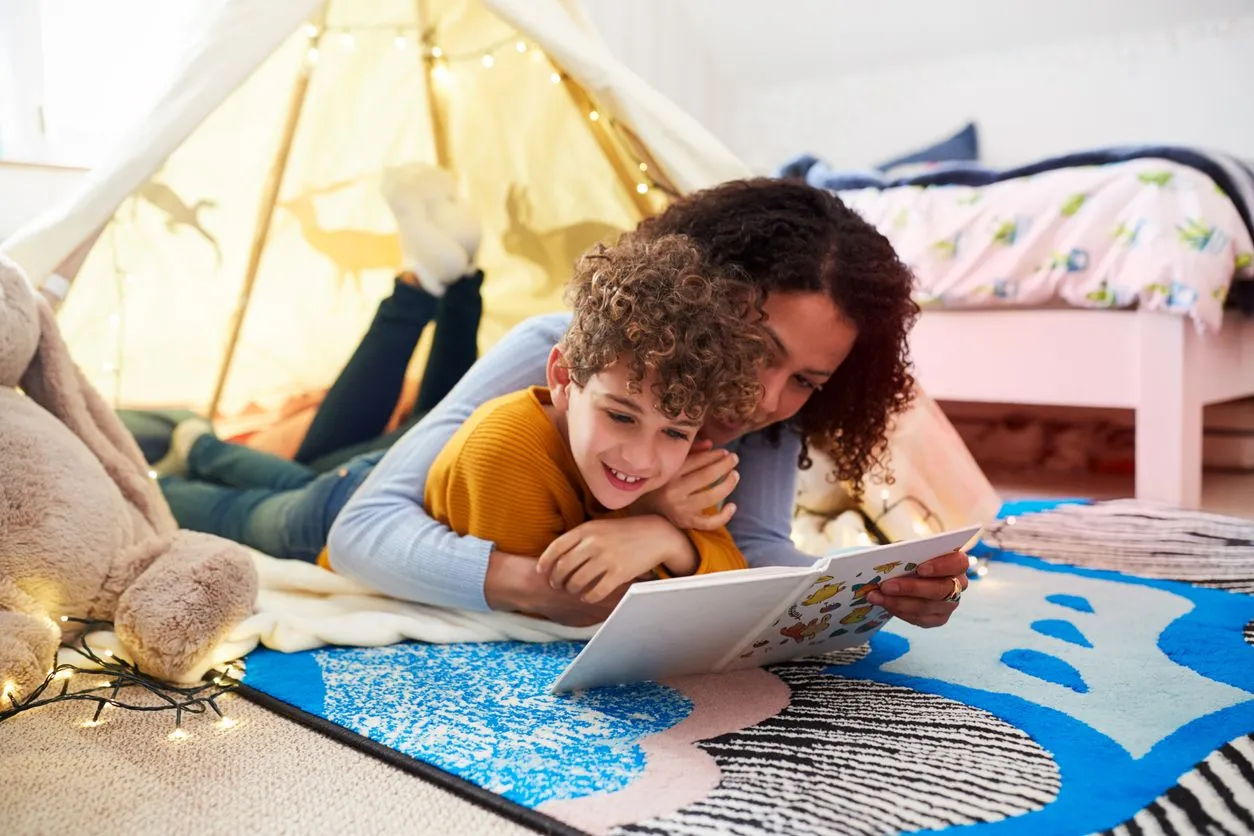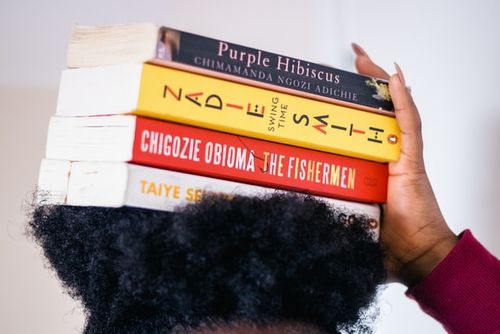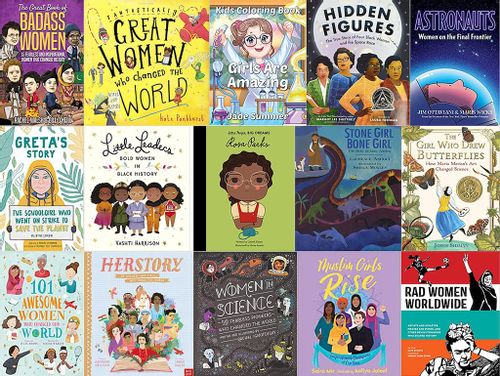FOR ALL AGES
“Are you sitting comfortably? Then we’ll begin…” So advised the BBC radio programme Listen With Mother, which broadcast short children’s stories from 1950.
The British show was cancelled generations ago, but the phrase still lives on in cultural memory -- such is the enchantment of the story read aloud. Story time has always been part of children’s TV programming, and continues to this day (in Britain) with two slots a day on the CBeebies channel, often read by celebrities.
Reading aloud to our children is vital to their development. It’s recommended that parents begin the practice as soon as the child is born, or even while still in the womb, to get them used to vocal patterns. All children in England and Wales are offered a free book in the first year of life, and another age 3-4 from the Bookstart charity. There’s even a special day for sharing books with our children. World Read Aloud Day was set up by LitWorld in 2010, in celebration of “the power of reading aloud to create community, to amplify new stories, and to advocate for literacy as a foundational human right”. It’s still going strong, and celebrated every 21 February.
We all know how to read a book out loud to our kids -- we learnt the skill when we ourselves were children. But there are some simple tricks you can do to take the experience to the next level, making reading aloud even more fun and educational.
It’s no good reading Harry Potter to a 1-year-old, nor unleashing Dear Zoo on an 8-year old. Getting the age group right is important. Many young children will become listless if you read from a more advanced book too early -- they won’t understand many of the words, and the concepts may be alien or even scary. It can be useful to push a little beyond their own reading ability, but don’t do this with every book. Being read to should be a pleasure not a struggle -- especially if you're winding things down in the evening.
Children’s books aren’t particularly expensive but, especially with early-years stories, you’re going to get through them very quickly. Joining a library is the simple but joyous solution. Here, you have free access to hundreds, perhaps thousands of titles. Most libraries also have digital services that allow you to freely download books when you can’t get out to the physical library (hello lockdown!). Taking your children along to help choose their books can also be a powerful way to inculcate a love of literature. Libraries are not just stores of free books, but also community hubs where you can take part in group reading activities and book challenges.
You only have to walk into the children’s section of a book shop or library to see just how many titles are available. We’re lucky enough to live in an age where children’s literature is as diverse and vibrant as that for adults -- it’s not all pirates, dinosaurs, astronauts and fairies (though, granted, those themes are still very popular). This means you should have no problem finding books that appeal to your child’s own favourite topics, whether they’re into tracking down garden snails, or looking out for alien spaceships, or dreaming of the deep oceans. Tailoring books to interests is an obvious but effective way to make sure they’re fully engaged when it comes to reading aloud, but you should also try throwing in some diversity. Get hold of books from different cultures and backgrounds to that of your own family, and try books that transport your child to unfamiliar (but exciting) places.
Not all stories are about abstract characters and places. Many reflect important milestones in a child’s life. For example, it’s now easy to find preschooler stories that tackle the arrival of a new sibling, the challenges of potty training, the disruption of moving house, the first day at school, and all the other momentous occasions of early life. Similarly, books for slightly older children often introduce important topics such as race, appearance, disability, bullying, loneliness and mental health, in language suitable to their age. Such books are enriching for children, but also helpful to adults who might otherwise struggle to introduce these often difficult concepts to kids.
It’s perfectly possible, of course, to read an unfamiliar book from scratch without any idea where the story is heading. With books for younger children, however, it can pay to do a bit of reconnaissance first. Flick through the book and get a feel for the different characters and locations. This will help you with the next two suggestions, which make reading out loud all the more fun...
Try giving different characters different voices, to bring the story to life. We’ve probably all had a stab at this, to varying degrees of success. It works best when there are only three or four characters. Many more, and you can easily lose track of how everyone speaks… or even run out of funny voices you can put on. If you have time, look ahead before reading and try to determine in advance how each character will speak. You might want to reserve your normal voice for the protagonist, or whoever has most ‘lines’. Oh, and avoid getting too acrobatic with your vocal cords. I’ve tried deploying scratchy, growly voices before now, only to wake up with a sore throat next morning.

A book becomes all the more memorable if you not only read it, but act out the gestures, facial expressions and movements. If you want to see a masterclass, just google ‘Rik Mayall Jackanory’, for an inspirational reading of George’s Marvellous Medicine.
I often stand up to read out loud. That way, I can pace around the room, jump like a spider, sweep my arms around in gesticulation and generally act like a bit of a tomfool. It’s good exercise, actually, as well as providing my daughter with a few giggles.
Another advantage of having a sneaky peek through the book beforehand is that you can then set up props. If you see that a character is destined to join a pirate ship, then have a pirate hat hiding to one side. You could have a wand at the ready for Harry Potter, or toy food for the Hungry Caterpillar. It’s not something you’ll want to do every night, but the occasional prop, pulled out as a surprise, can be a magical moment.
Books for younger children are usually about more than just words. Look for books with pop-ups, rich illustrations, picture puzzles, optical illusions and textured surfaces -- it all adds to the fun. As kids grow older, the text becomes more important, but many novels still throw in visual effects and curious typography -- part of the reason David Walliams’s novels are so popular.
If your children get the same old mum or dad reading to them every night, then that’s all lovely and brilliant. But it can also be a joy to widen things out a bit and get in guest readers. With modern technology like Zoom or FaceTime, it’s easy enough to dial in grandma or uncle Tom or big sister at university for that bedtime story. You could even arrange a virtual group reading, with friends from school, to mix things up a bit.
Of course, reading aloud can be a two-way street. What’s to stop your child reading a bedtime story to you? Or perhaps you could do something more collaborative. You could read the lion’s share of the book, with your child having a go at the first or last line on every page. Or you could read even pages and they read odd.
You can even turn reading out loud into a bit of a lark. I like to play a word substitution game with the kids. I read out the story as normal, but then throw in a surreal or out-of-place word to check that they’re listening. You could, for example, say the word ‘mackerel’ every time you find a noun beginning with ‘M’. They then have to guess what the word should have been, or try to read the word that you’ve substituted. Alternatively, change all the character names to match those of yourselves and immediate family and friends -- it makes the story that bit more engaging and also offers a bit of a challenge for you, the reader, trying to remember to make the substitution each time.
Whatever you do, whatever you read, make sure you have a right old barrel of fun. Reading aloud can be the highlight of the day for both you and your child, and it’s one aspect of parenthood that you will miss the most once they are too old for the adventure.
Browse our guides to the best children’s books by age and topic.
60 Incredible Facts About Reading and Books
11 Celebrities Reading to Families During Lockdown
Read The Disclaimer
At Kidadl we pride ourselves on offering families original ideas to make the most of time spent together at home or out and about, wherever you are in the world. We strive to recommend the very best things that are suggested by our community and are things we would do ourselves - our aim is to be the trusted friend to parents.
We try our very best, but cannot guarantee perfection. We will always aim to give you accurate information at the date of publication - however, information does change, so it’s important you do your own research, double-check and make the decision that is right for your family.
Kidadl provides inspiration to entertain and educate your children. We recognise that not all activities and ideas are appropriate and suitable for all children and families or in all circumstances. Our recommended activities are based on age but these are a guide. We recommend that these ideas are used as inspiration, that ideas are undertaken with appropriate adult supervision, and that each adult uses their own discretion and knowledge of their children to consider the safety and suitability.
Kidadl cannot accept liability for the execution of these ideas, and parental supervision is advised at all times, as safety is paramount. Anyone using the information provided by Kidadl does so at their own risk and we can not accept liability if things go wrong.
Kidadl is independent and to make our service free to you the reader we are supported by advertising.
We hope you love our recommendations for products and services! What we suggest is selected independently by the Kidadl team. If you purchase using the buy now button we may earn a small commission. This does not influence our choices. Please note: prices are correct and items are available at the time the article was published.
Kidadl has a number of affiliate partners that we work with including Amazon. Please note that Kidadl is a participant in the Amazon Services LLC Associates Program, an affiliate advertising program designed to provide a means for sites to earn advertising fees by advertising and linking to amazon.
We also link to other websites, but are not responsible for their content.
Was this article helpful?



Browse Category



We’ll send you tons of inspiration to help you find a hidden gem in your local area or plan a big day out.



Check your inbox for your latest news from us. You have subscribed to:
Remember that you can always manage your preferences or unsubscribe through the link at the foot of each newsletter.